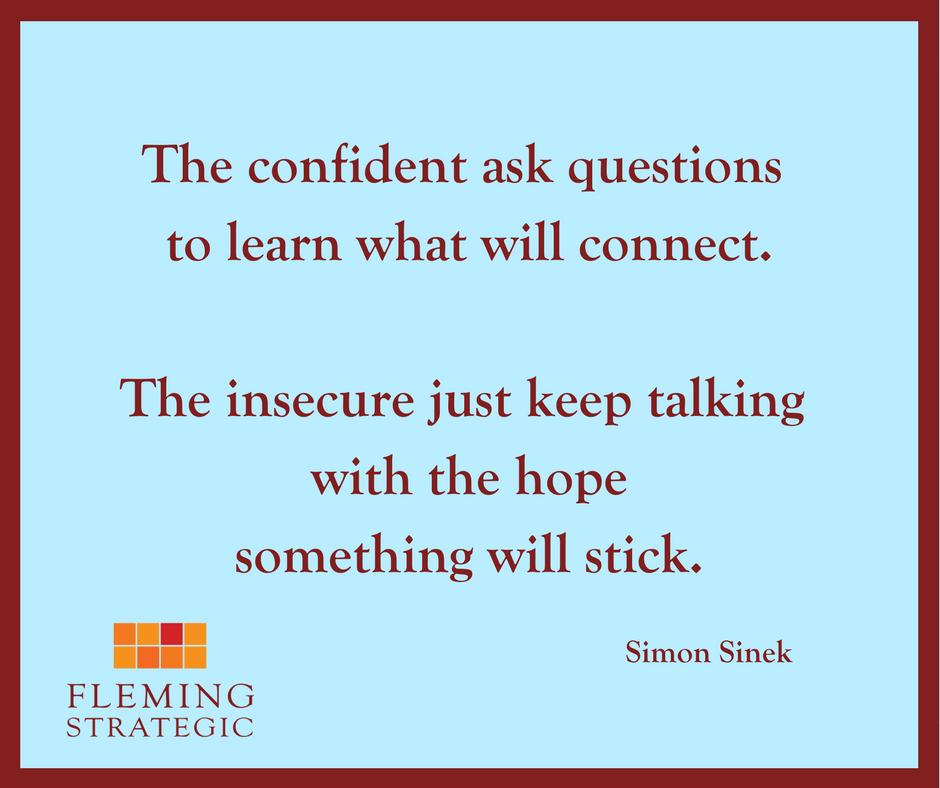Silence May Not Mean Satisfaction
You’ve probably heard it before: it’s much easier to source new business from an existing client than from a non-client.
You may also know that many clients judge their experience based largely on the day-to-day interactions between you – how well you serve the client, in other words. Studies show that clients unhappy with the service they receive will not necessarily share that displeasure with you unless it becomes so pronounced that they’re ready to discontinue the relationship and hire someone else instead. That’s the wrong time to learn that your client is dissatisfied: it’s usually too late to correct the problem and save the relationship.
Last week’s travel reinforced each of those points and, by analogy, provided some insight into what goes right and what can go wrong with client relationships.
Thanks to all the travel I do, I’m a platinum member with Delta. Some months ago, I had to fly another airline between LA and San Francisco, and it was an eye-opening experience. It was all about customer service:
- When I checked in, the agent asked how I was and looked at me while I answered. The agent chatted with me as he quickly and accurately checked me in and printed my ticket. He answered my several questions with humor and good information. This is, unfortunately, not a common experience for me while traveling.
- Boarding was fast and easy, the seats were comfortable, and the flight was on time despite a late take-off.
- The flight attendant was pleasant and helpful.
- My luggage arrived, and it did so quickly. (Unfortunately, I now mentally bid farewell to my belongings when I have to check a bag, having had two bags delayed for days and one permanently lost.)
Both airlines have always met the key objective of getting me to my ticketed destination safely. I like Delta (at least, I’m not terribly dissatisfied with Delta) and yet my short trip with Virgin America made me ready to consider choosing to fly with them when I have that option. And I noticed the differences highlighted above when I next flew on Delta. It would be a stretch to say I’m now a customer by convenience rather than loyalty, but it would be completely accurate to say that if the circumstances were right, I could be wooed away by another airline.
Could your clients be wooed away? Have you recently reviewed your client service standards (with help from your staff, if appropriate) to be sure that your clients receive what they need from you? A few common areas to consider:
- How quickly do you return telephone calls and answer emails?
- Do your clients know the people in your business with whom they may need to talk? An introduction can help clients feel comfortable talking with others; without one, they may feel foisted off or that they aren’t important enough to talk with you directly.
- Do you make clients welcome and comfortable when they visit your office?
- Do you communicate with the frequency and in the mode your clients prefer?
These are just a few examples of areas to consider when you’re evaluating your client service. This week, take a fresh look at opportunities to serve your clients more effectively. You might even consider asking a few clients how satisfied they are. (Use an open-ended question like, “Janice, I’d like to make it as easy as possible for you to work with us. Is there anything I or my staff could do to provide you with better service?”) Don’t assume that your clients would let you know if they were dissatisfied.
Acknowledge all of the feedback you receive from clients. While you may be unable to incorporate every suggestion, failing to acknowledge your clients’ responses may deal a fatal blow to your relationship. And if you can’t incorporate a suggestion, consider explaining why and making an alternative proposal to meet the client’s concern.


